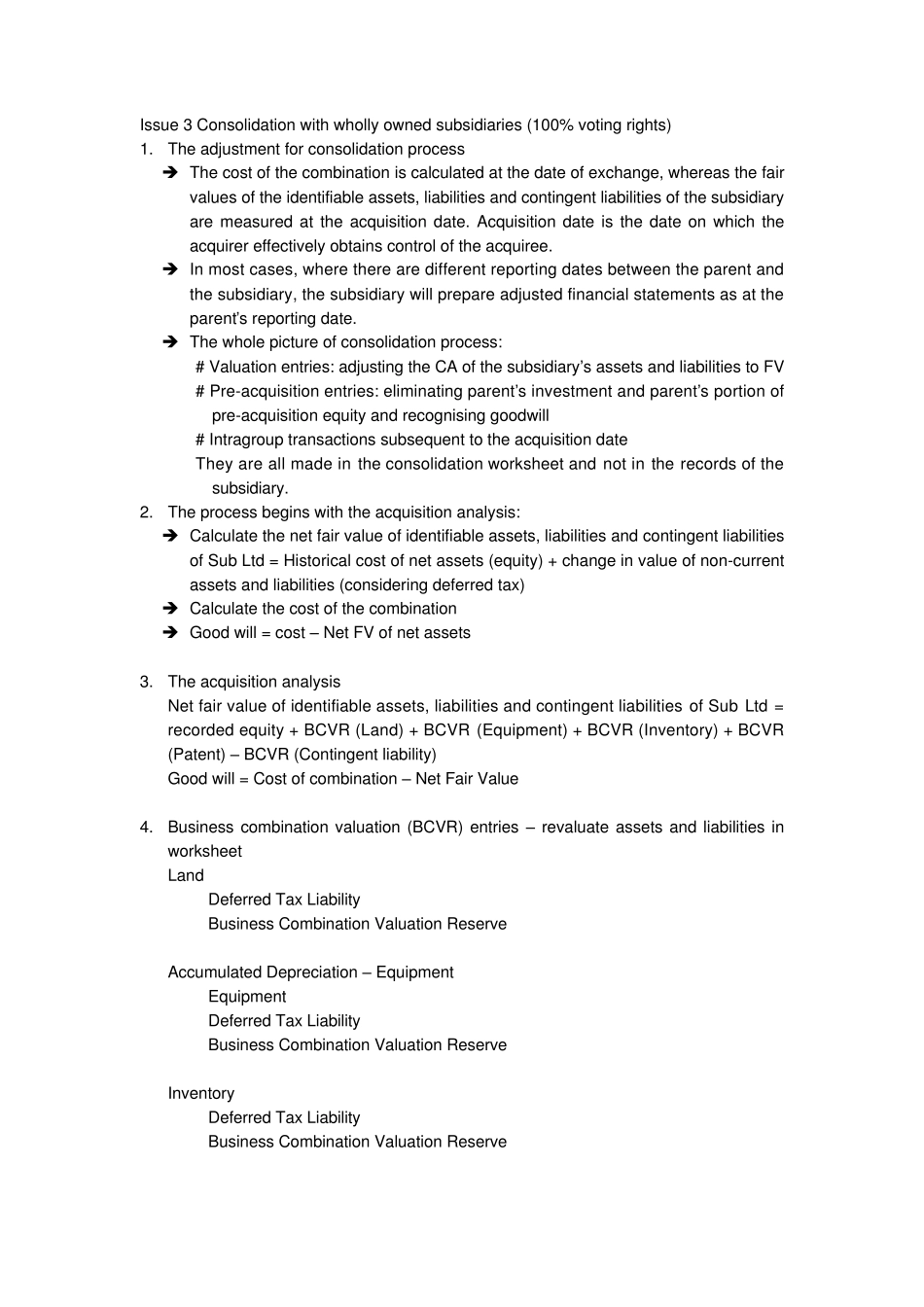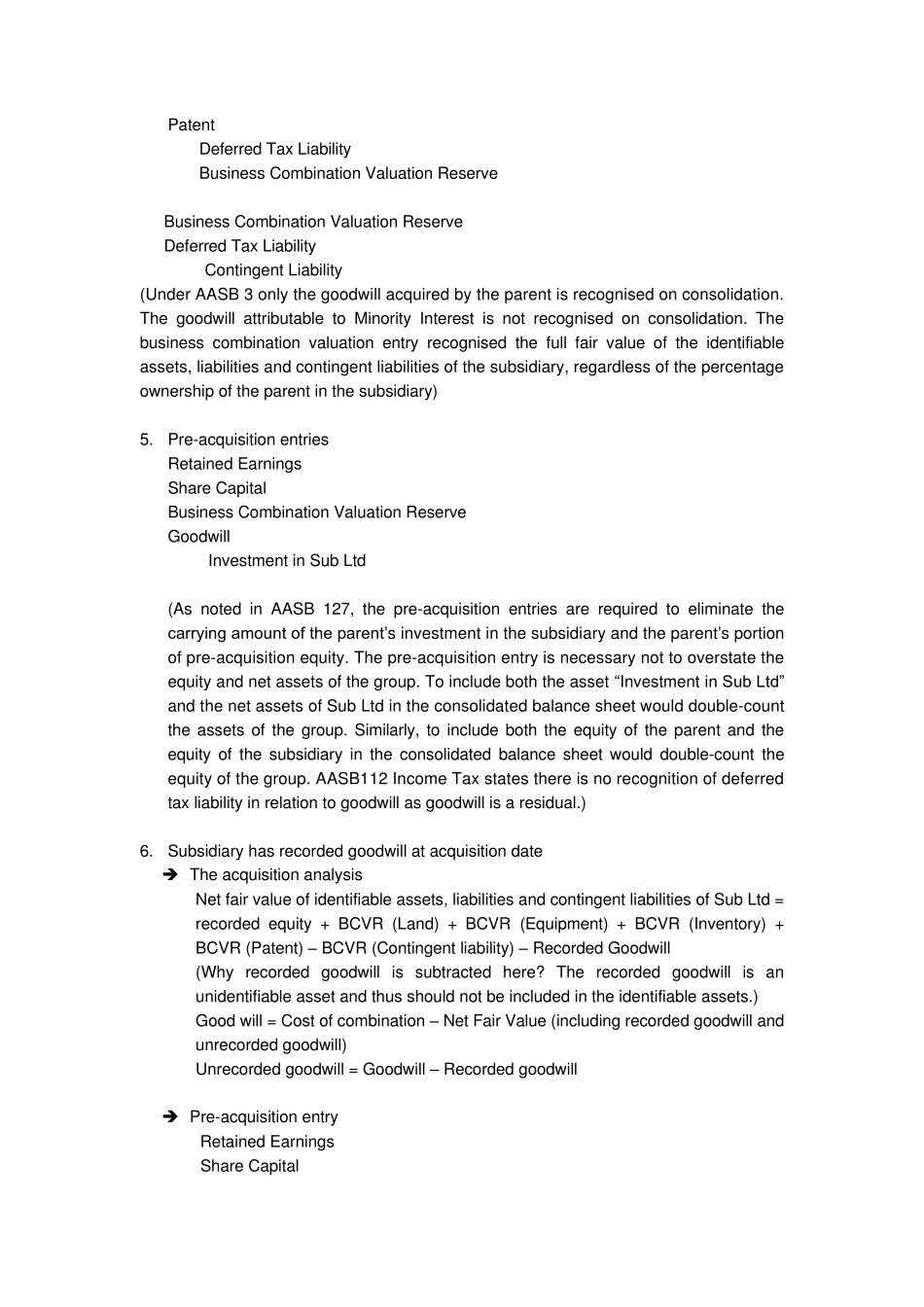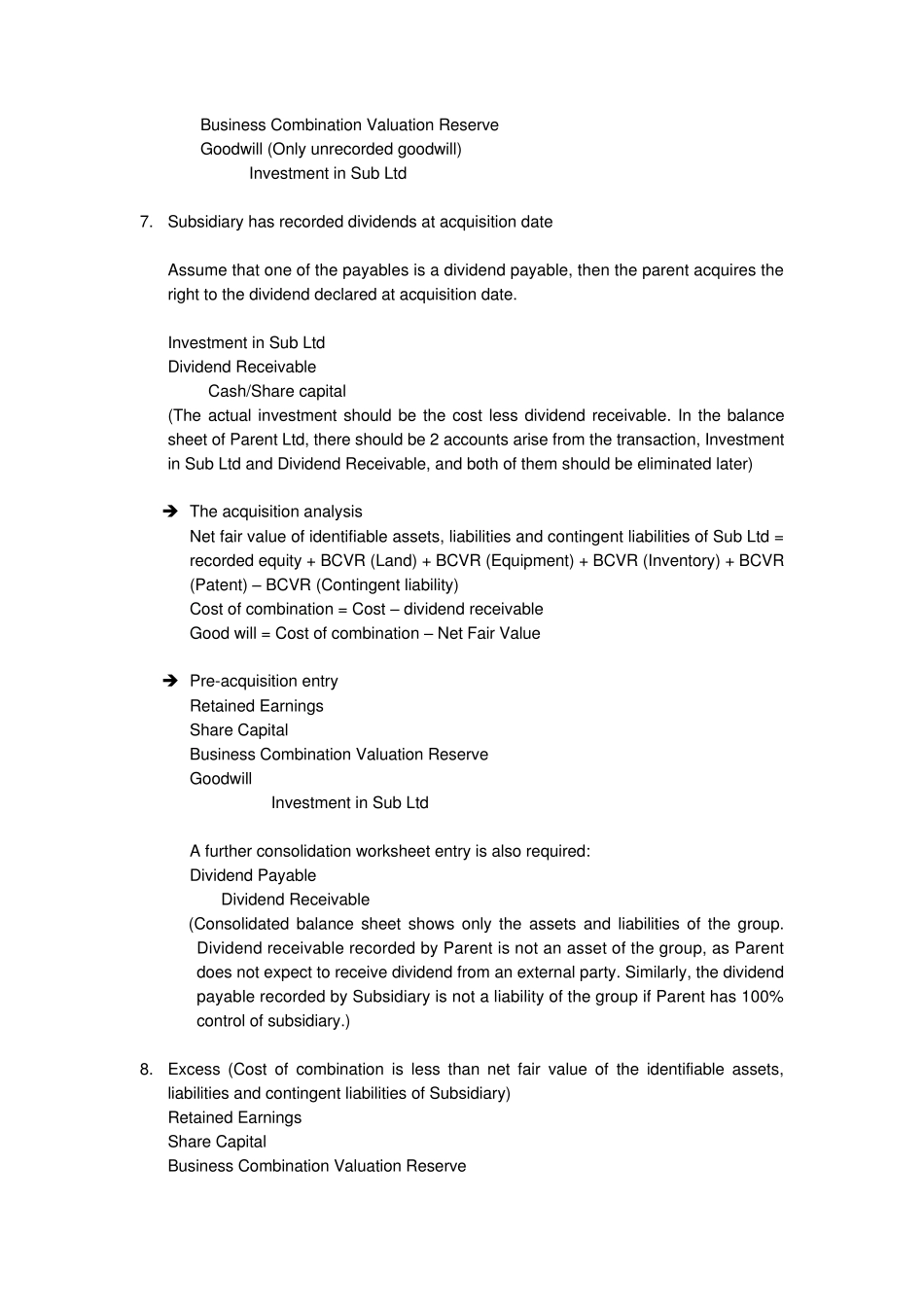Issue 3 Consolidation with wholly owned subsidiaries (100% voting rights) 1. The adjustment for consolidation process The cost of the combination is calculated at the date of exchange, whereas the fair values of the identifiable assets, liabilities and contingent liabilities of the subsidiary are measured at the acquisition date. Acquisition date is the date on which the acquirer effectively obtains control of the acquiree. In most cases, where there are different reporting dates between the parent and the subsidiary, the subsidiary will prepare adjusted financial statements as at the parent’s reporting date. The whole picture of consolidation process: # Valuation entries: adjusting the CA of the subsidiary’s assets and liabilities to FV # Pre-acquisition entries: eliminating parent’s investment and parent’s portion of pre-acquisition equity and recognising goodwill # Intragroup transactions subsequent to the acquisition date They are all made in the consolidation worksheet and not in the records of the subsidiary. 2. The process begins with the acquisition analysis: Calculate the net fair value of identifiable assets, liabilities and contingent liabilities of Sub Ltd = Historical cost of net assets (equity) + change in value of non-current assets and liabilities (considering deferred tax) Calculate the cost of the combination Good will = cost – Net FV of net assets 3. The acquisition analysis Net fair value of identifiable assets, liabilities and contingent liabilities of Sub Ltd = recorded equity + BCVR (Land) + BCVR (Equipment) + BCVR (Inventory) + BCVR (Patent) – BCVR (Contingent liability) Good will = Cost of combination – Net Fair Value 4. Business combination valuation (B...


